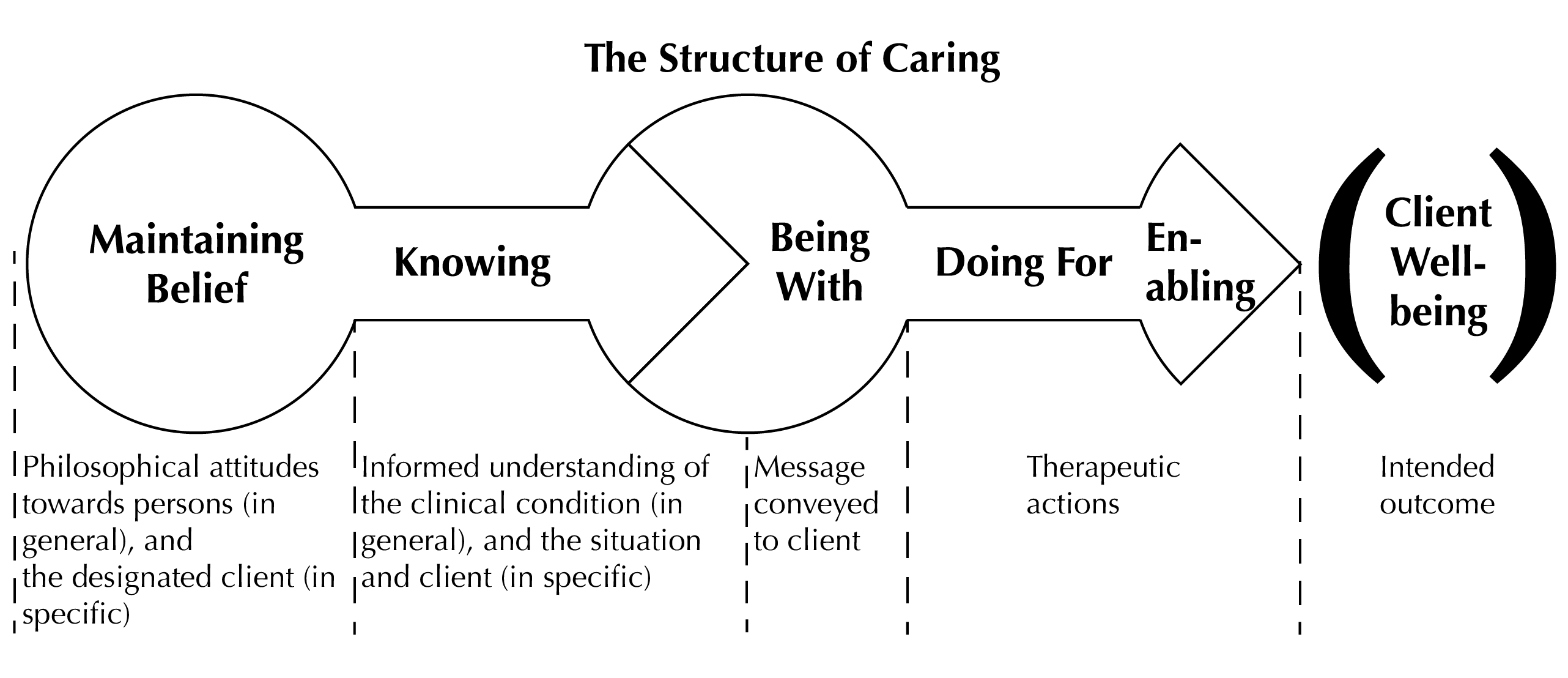Introduction
Swanson’s theory is one of the most informative in the medical field. It is heavily based on the theorists’ research and practice. The theory perceives caring as a sequence of five categories. It was primarily centered on maternal care, such as struggling with miscarriage; however, it spread to nursing as well. The following essay will review the concepts and main idea of the theory, as well as evaluation and analysis.
The Concepts of Swanson’s Theory
The five stages of caring are knowing, being with, doing for, enabling, and maintaining belief. Each strengthens a medical professional’s attitude and facilitates a patient’s health. Its goal is to assist nurses with providing care that features respect, dignity, and empowerment. Caring is known as something that produces health and growth in interactions with the patient (Psych-Mental Health Hub, 2022).
Maintaining belief is when someone holds a person in esteem while preserving a hopeful attitude and granting realistic optimism. Knowing features the comprehension of events by their meaning in another one’s life. Being with them helps nurses transmit the message of valuing a patient and their experiences. Enabling facilitates one’s path through life changes and unknown occurrences (McKelvey, 2018). Finally, doing for is identified as helping people and contributing to their health and recovery.

The first mentioned step helps nurses respect and acknowledge a patient’s differences. Knowing requires a clear assessment of existential and physical needs. It has features of protective behavior towards a person without causing danger or harm. Doing for is encompassed by the definition of nursing, implementing deeds that are done according to a patient’s welfare. Enabling requires nurses to communicate with patients and their relatives suitably.
The model was specified to guarantee regular caring behaviors that could increase the satisfaction of those cared for. The caring process and its crucial and noticeable criteria identify humanitarian behaviors crucial to nursing and guarantee a personal approach. It is crucial to the field, as it emphasizes the role of caring in the occupation. Finally, it is comprehensive, even for beginner nurses and health practitioners.
Conclusion
In conclusion, the caring theory emphasizes this aspect’s value in medicine. It consists of five stages: being with, enabling, knowing, doing for, and maintaining belief. The theory came into existence as a means of helping mothers; however, it was later integrated into nursing. This valuable idea helps nurses and health professionals comprehensively teach crucial qualities.
References
McKelvey, M. M. (2018). Finding meaning through Kristen Swanson’s caring behaviors: A cornerstone of healing for nursing education. Creative Nursing, 24(1), 6-11. Web.
Psych-Mental Health Hub. (2022). Kristen Swanson theory of caring and healing. Web.